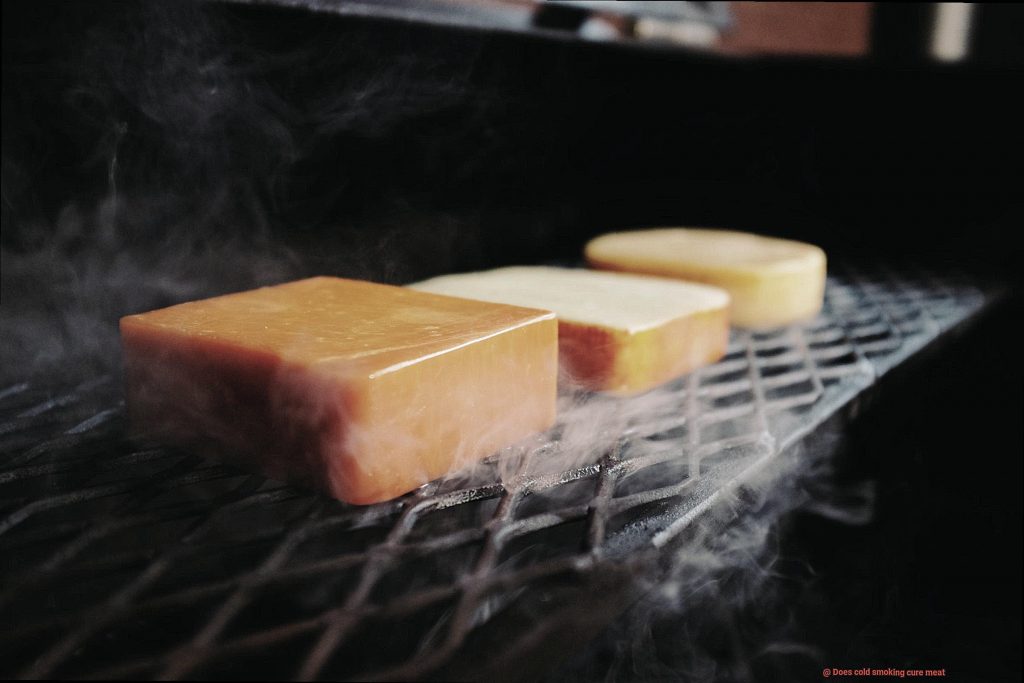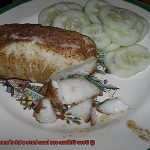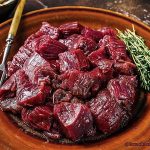Prepare to be captivated by the transformative power of time-honored techniques that turn ordinary cuts of meat into flavor-packed wonders. In this blog post, we’ll dive deep into the intricate process of cold smoking meat, unravel its secrets, and explore its effectiveness in curing our beloved protein.
Cold smoking is a method that involves exposing meat to smoke at temperatures below 90°F (32°C), setting it apart from hot smoking. Picture this: a medley of wood chips like hickory or applewood burning, releasing aromatic smoke that gracefully envelops the meat. But hold your horses – cold smoking is no quick fix. It can take days, even weeks for the flavors to seep in and work their magic on taste, texture, and preservation.
The real trick lies in the combination of low temperature and gentle smoke infusion. Unlike hot smoking that fully cooks the meat, cold smoking focuses on imparting rich smoky flavors while preserving its raw essence. By keeping the temperature low enough not to cook the meat, cold smoking distinguishes itself from other curing or smoking methods.
Now let’s address the burning question: does cold smoking cure meat? While it certainly infuses incredible flavors and aids in preservation, it’s important to note that curing and smoking are separate processes. Cold smoking serves as a complement rather than a substitute for traditional curing methods.
When we cold smoke meat, the smoke actually inhibits microbial growth with its antimicrobial properties. This natural preservation technique, combined with moisture removal from the meat during cold smoking, helps prevent bacteria, mold, and spoilage agents from taking hold. However, due to its relatively low temperature and lack of uniform heat necessary to kill harmful bacteria entirely, cold smoking alone isn’t considered a comprehensive curing method.
To achieve safe and effective meat preservation, we need a combination of curing techniques like salting or brining before subjecting the meat to cold smoking. Curing involves treating the meat with salt or a salt-based solution, drawing out moisture and reducing the potential for spoilage. Once this initial curing step is complete, the cold smoking process enhances flavor and extends the shelf life of the meat.
In conclusion, cold smoking is an enchanting process that imparts delectable flavors and aids in preservation.
Contents
What is Cold Smoking?
Then, you’re likely familiar with the term “cold smoking.” This centuries-old technique is a favorite among food enthusiasts for its ability to infuse meats with a mouthwatering smoky flavor while preserving their natural textures. In this article, we will delve into the fascinating world of cold smoking, exploring its benefits, methods, and safety considerations.
What is Cold Smoking?
Cold smoking is a method of flavor enhancement and preservation used primarily for meats. Unlike hot smoking, which combines smoking with cooking, cold smoking focuses solely on infusing flavor and preserving the meat. It involves exposing the meat to smoke at temperatures below 100°F (38°C) for an extended period.
Flavor Infusion:
The main goal of cold smoking is to infuse meats with a rich smoky flavor without significantly altering their texture or moisture content. During the process, smoke particles gently adhere to the surface of the meat, creating a delightful aroma and taste that tantalize our taste buds. Cold smoking takes dishes like succulent bacon, tender ham, or savory sausages to new heights by imparting a unique smoky character.
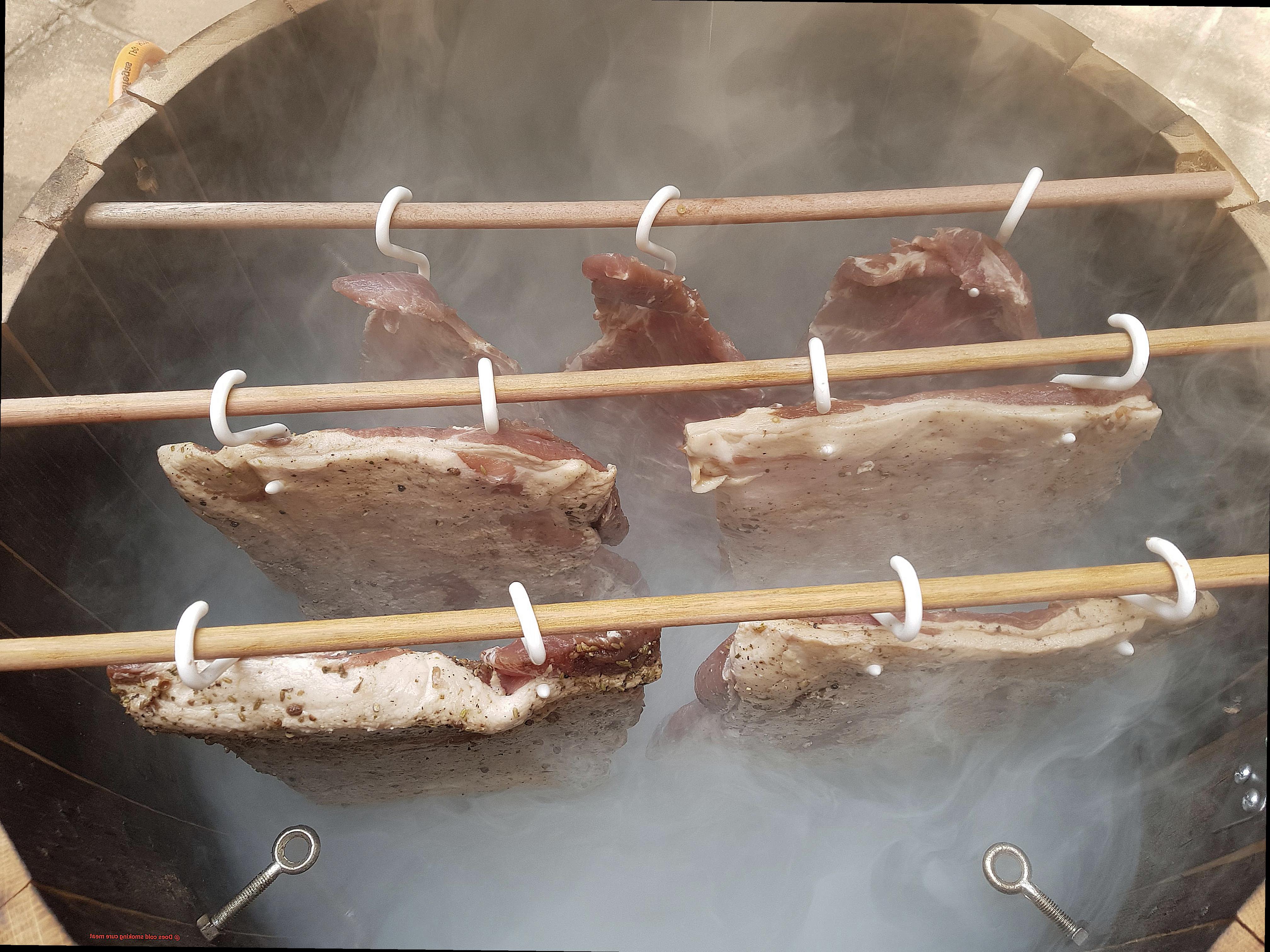
Preservation Benefits:
Cold smoking also acts as a natural preservative. The extended exposure to smoke helps inhibit the growth of bacteria and other microorganisms that can spoil meat. However, it’s important to note that cold smoking alone does not fully cure meat. Additional steps, such as salt curing or brining, are often necessary for complete preservation.
Controlling Temperature and Airflow:
To achieve successful cold smoking, proper temperature and airflow control are crucial. The temperature must remain consistently low to prevent cooking while allowing sufficient airflow ensures an even distribution of smoke around the meat. Traditional methods involve using wood chips or sawdust with a smoldering heat source, like charcoal or hardwood.
Safety Considerations:
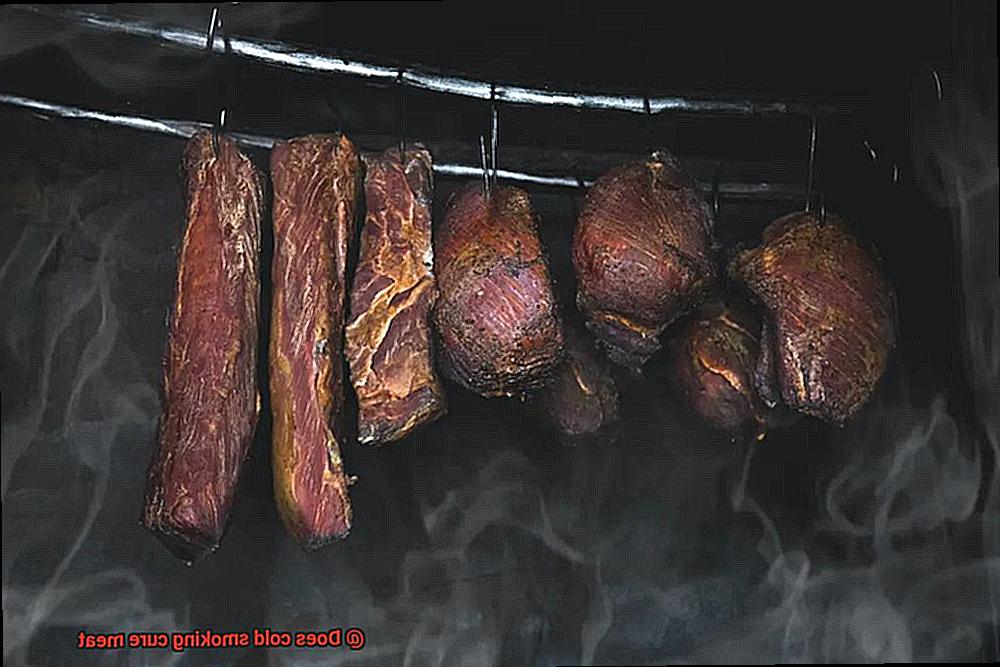
While cold smoking can enhance flavor and preserve meats, it’s important to understand that it does not fully eliminate bacteria or inhibit their growth. Therefore, cold smoked meats should always be cooked thoroughly before consumption to ensure food safety. Additionally, cold smoking should only be performed with proper equipment and under controlled conditions to minimize the risk of bacterial growth.
Versatility and Beyond:
Cold smoking is not limited to meats alone. Fish, poultry, and even cheese can benefit from this technique. Whether you’re exploring new flavor profiles or looking to impress your guests with unique culinary creations, cold smoking offers endless possibilities.
In conclusion, cold smoking is a remarkable technique that enhances the flavor and preserves meats through exposure to low temperatures and smoke. It imparts a distinct smoky taste without cooking the meat while acting as a natural preservative. However, it’s important to remember that cold smoking alone does not fully cure meat, and additional steps may be required for complete preservation. So, fire up your smokers and embark on an aromatic journey into the world of cold smoking.
Does Cold Smoking Preserve or Cure Meat?
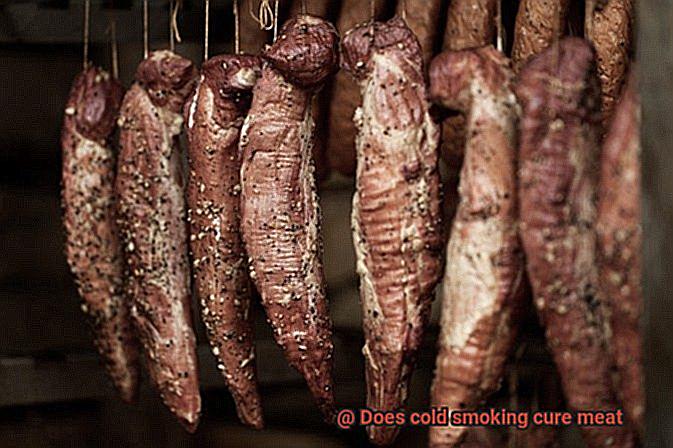
In this comprehensive exploration, we will delve into the art of cold smoking, unravel the nuances of preservation and curing, and shed light on how cold smoking can contribute to extending the shelf life of cured meats.
Understanding Preservation and Curing:
Preservation and curing are vital methods for prolonging the shelf life of food. Preservation techniques encompass refrigeration, freezing, canning, and drying, while curing involves the addition of salt or sugar to create an environment that inhibits bacterial growth.
Cold Smoking as a Flavor-Enhancing Method:
Cold smoking is celebrated for its ability to infuse meats with tantalizing smoky flavors that elevate the dining experience. However, it is crucial to note that cold smoking alone is insufficient for long-term preservation. The low temperatures used in cold smoking do not effectively inhibit bacterial growth, making it essential to combine cold smoking with other preservation techniques.
Factors Affecting Preservation:
To ensure effective preservation, several factors come into play. Temperature, humidity levels, salt concentration, and duration of exposure all impact the success of preservation methods. Cold smoking’s low temperatures and lack of moisture removal make it inadequate as a standalone preservation technique.
Synergy between Salt Curing and Cold Smoking:
Salt curing is a widely employed method for preserving meats like bacon and ham. By rubbing or soaking the meat in a mixture of salt and seasonings, moisture is drawn out, inhibiting bacterial growth. Cold smoking is often applied after salt curing to introduce smoky flavors while contributing to the overall preservation process.
Refrigeration: A Companion to Cold Smoking:
Refrigeration is a common preservation method that involves keeping food at low temperatures to slow down bacterial growth. When combined with cold smoking, refrigeration can extend the shelf life of smoked meats. The low temperatures in the refrigerator inhibit bacterial growth, while the smoky flavors develop during the cold smoking process.
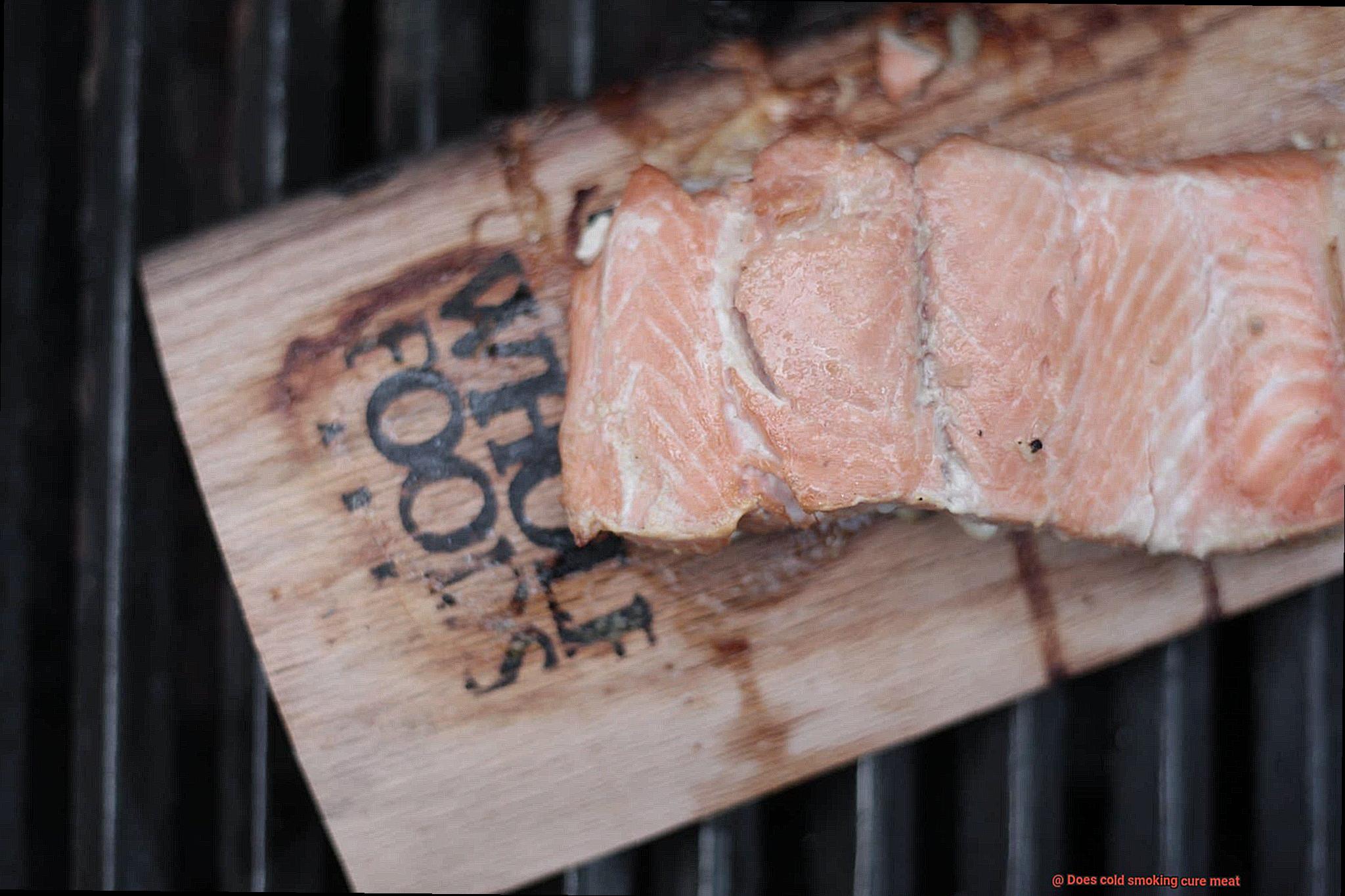
Is Cold Smoking Safe?
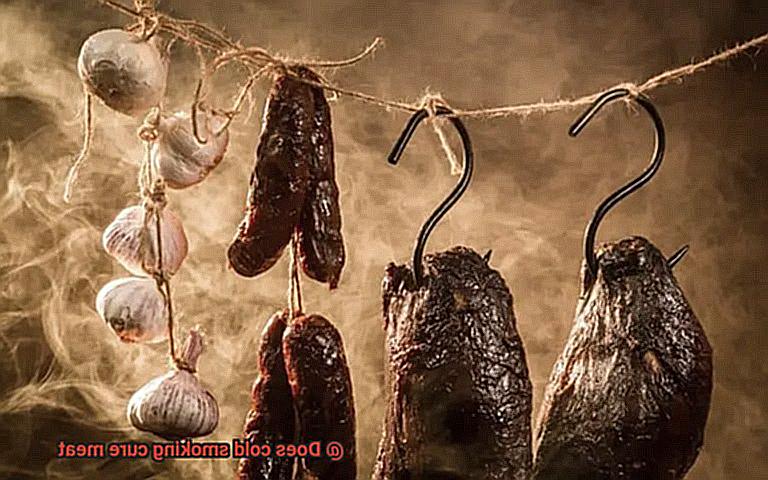
Imagine the scene: you’re in your backyard, surrounded by the tantalizing aroma of smoldering wood. You’ve got a selection of mouthwatering meat ready to undergo a magical transformation into delectable, smoky goodness. But before you dive headfirst into the world of cold smoking, it’s crucial to understand the safety measures necessary to ensure a perfectly safe and satisfying experience.
First and foremost, let’s talk about curing. Curing is the process of treating meat with salt and other ingredients to remove moisture and inhibit bacterial growth. Not only does curing enhance flavor, but it also prolongs the shelf life of the meat. However, it’s essential to use the correct amount of salt during this process. Too little salt won’t effectively inhibit bacterial growth, while too much will leave your taste buds overwhelmed by a sea of saltiness. To ensure accurate curing, consult a trusted recipe or seek guidance from a professional.
Cleanliness is next on our list of priorities. Before embarking on your cold smoking adventure, thoroughly clean and sanitize all equipment that will come into contact with the meat – smokers, racks, hooks, and anything else you can think of. Anything that touches the meat should be squeaky clean to minimize any risk of contamination.
Temperature control is another crucial aspect of cold smoking safety. Keep your smoker at a temperature below 100°F (38°C) to prevent the meat from cooking and to discourage bacterial growth. Investing in a reliable thermometer and closely monitoring the temperature throughout the smoking process is essential for maintaining food safety.
Now let’s talk about ventilation – an often-overlooked hero in the realm of cold smoking safety. Adequate airflow allows smoke to circulate around the meat, preventing condensation – a breeding ground for bacteria. Good ventilation helps carry away any potential contaminants and reduces the risk of bacterial growth.
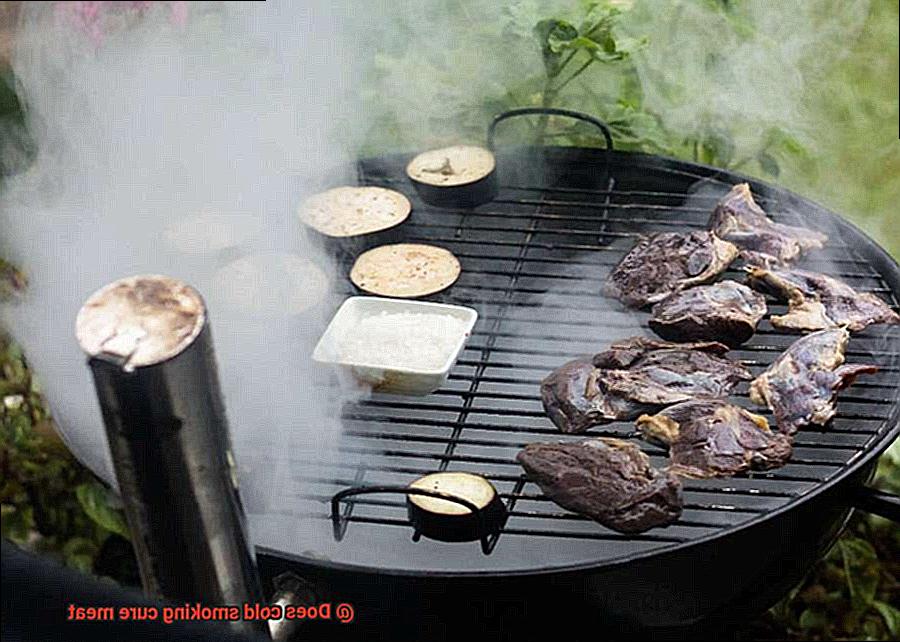
Once your meat has been smoked to perfection, proper storage is paramount. Refrigerate it promptly at temperatures below 40°F (4°C) to slow down bacterial growth and maintain its freshness. Vacuum-sealing or tightly wrapping the meat can also provide an extra layer of protection against any potential contaminants.
How Long Should I Cold Smoke Meat?
Today, we embark on a flavorful journey into the world of cold smoking meat. Imagine yourself in your backyard, surrounded by the mouthwatering aroma of smoldering wood and the anticipation of transforming raw meat into a culinary masterpiece. But before we dive in, let’s explore the process, ideal smoking times, and the factors that influence them.
The Lowdown on Cold Smoking:
Cold smoking is a method that imparts a smoky flavor to meat while keeping it raw. Unlike traditional curing methods, cold smoking doesn’t involve cooking the meat. Instead, it infuses that irresistible smoky goodness we all crave.
Factors Influencing Smoking Time:
The duration of cold smoking depends on several factors. Let’s consider them:
- Meat type and thickness: Delicate fish or bacon may only need a few hours of smoking to achieve the desired flavor. Thicker cuts like pork shoulder or brisket might require longer smoking times to fully absorb the smokiness.
- Personal preference: Some grill masters prefer a subtle hint of smoke, while others crave a bold, intense flavor. Experimentation is key to finding your sweet spot.
Ideal Smoking Times:
While there’s no one-size-fits-all answer to smoking times, experts recommend cold smoking for around 4-6 hours for most meats. This duration strikes a balance between achieving a flavorful smoke profile and avoiding overpowering bitterness.
However, if you’re seeking an even deeper flavor experience, you can extend the smoking time up to 24 hours. Just remember to monitor the temperature diligently to prevent any food safety risks.
Safety First:
Speaking of safety, it’s crucial to keep cold smoking temperatures below 90°F (32°C) to prevent cooking the meat. We want to expose the meat to smoke without raising its internal temperature. So, grab your trusty thermometer and keep an eye on it.
Proper Storage:
Once your meat has undergone its smoky transformation, it’s time to think about storage. Cold-smoked meats should be refrigerated or frozen promptly to prevent bacterial growth. While they’re incredibly flavorful, they’re not safe for long-term storage at room temperature.
What Types of Meats Can be Cold Smoked?
If you’re a grill master looking to take your culinary skills to the next level, then cold smoking might just be the technique for you. Cold smoking is a method of adding incredible smoky flavors to meats without fully cooking them.
In this article, we will explore the types of meats that can be cold smoked, so get ready to tantalize your taste buds.
Bacon – A Sizzling Sensation:
Bacon lovers, rejoice. Cold smoking is the secret behind that irresistible smoky flavor in your favorite breakfast treat. Picture thick slices of pork belly, with its glistening fat and delicate marbling. As these strips of goodness enter the cold smoking chamber, they are enveloped in a cloud of smoky magic. The result? Bacon that is not only crispy and indulgent but also infused with a rich, savory essence that will make your taste buds sing.
Salmon – Seafood Paradise:
Imagine a delicate fillet of salmon, its vibrant pink flesh glistening under the gentle kiss of smoke. Before being exposed to this smoky symphony, the salmon is lovingly cured with a blend of salt and sugar. This curing process not only enhances the fish’s natural flavors but also preserves it, allowing you to savor its exquisite taste for longer. Once it enters the cold smoking chamber, the salmon absorbs the smoky aromas, transforming into a melt-in-your-mouth delicacy that will transport you straight to seafood paradise.
Sausages and Hams – Bursting with Flavor:
From juicy kielbasa to spicy chorizo, sausages are no strangers to the cold smoking treatment. These flavorful links already boast an array of spices and seasonings, but when they meet the cool embrace of smoke, something magical happens.
The smoke gently wraps around the sausages, infusing them with a depth and complexity that elevates their taste to new heights. As for hams, they too can benefit from the mesmerizing touch of cold smoke. Picture a perfectly cured ham, its tender flesh enveloped in a smoky halo. The result is a symphony of flavors that will have you savoring every succulent bite.
Cheeses – A Smoky Symphony:
Cold smoking isn’t just for meats; it’s also a game-changer for cheeses. Imagine biting into a slice of smoked cheddar, its creamy texture giving way to an explosion of smoky goodness.
Or perhaps you prefer the nutty notes of smoked gouda or the gooey perfection of smoked mozzarella. Whatever your cheese preference, cold smoking takes it to a whole new level.
The process infuses the cheese with a unique smoky flavor that pairs perfectly with crackers, bread, or your favorite recipes.
Poultry – A Subtle Smoky Twist:
If you’re looking to add a gentle smoky touch to your poultry dishes, cold smoking is the way to go. Imagine sinking your teeth into a piece of cold-smoked chicken, its tender meat infused with a subtle smoky twist. The smoke enhances the natural flavors of the poultry, adding complexity without overpowering. However, it’s important to remember that poultry should always be cooked thoroughly before consuming to ensure food safety.
The Benefits of Cold Smoking Meat
Look no further than the intriguing world of cold smoking. This ancient preservation and flavoring technique will have your taste buds dancing with delight. So, grab your apron and let’s dive into the benefits of cold smoking meat.
First and foremost, let’s talk about flavor. Cold smoking is a game-changer when it comes to infusing meats with that delectable smoky taste we all crave. Unlike hot smoking, which cooks the meat while smoking it, cold smoking imparts that irresistible smoky flavor without actually cooking the meat. Picture a succulent piece of beef or a delicate cut of fish, imbued with the essence of smoldering wood chips. The result is a mouthwatering symphony of flavors that will leave you longing for more.
But that’s not all. Cold smoking also acts as a natural preservative, extending the shelf life of your meat by inhibiting the growth of bacteria and other harmful microorganisms. The smoke creates an environment that these undesirables simply can’t thrive in. Say goodbye to worrying about spoilage and hello to savoring your smoked meats for longer periods.
What sets cold smoking apart is its ability to offer precise control over the flavor profile of your meat. With low temperatures and extended exposure times, the smoke seeps into every fiber, infusing the meat with a more pronounced and complex flavor. And here’s where things get fascinating – you can experiment with different types of wood chips or pellets to create unique flavor combinations. Imagine the rich, earthy notes of hickory mingling with the sweet, fruity essence of applewood. The possibilities are endless, allowing you to become a flavor alchemist in your own backyard.
Not only does cold smoking enhance flavor and preservation, but it also elevates the appearance of your meats. The prolonged exposure to smoke creates an appetizing golden-brown color on the surface, a visual feast for the eyes. Imagine presenting a platter of perfectly smoked meats, their bronzed exteriors glistening under the light. It’s a feast for the senses that will have your guests salivating before they even take their first bite.
Now, before you embark on your cold smoking journey, a word of caution – cold smoking doesn’t fully cook the meat. So, it’s crucial to follow proper food safety practices. Ensure you’re using high-quality, fresh ingredients and maintain strict temperature control to eliminate any potential risks associated with consuming raw or undercooked meat. Safety first, always.
The Drawbacks of Cold Smoking Meat
Today, we’re going to delve into the captivating realm of cold smoking meat. While this method adds a tantalizing smoky flavor and extends the shelf life of your meats, it’s important to be aware of the potential risks and disadvantages associated with this cooking technique. So, grab your apron and let’s explore the drawbacks of cold smoking.
Bacterial Growth:
One of the main concerns with cold smoking is the risk of bacterial growth. Cold smoking involves exposing the meat to smoke at temperatures below 90°F (32°C), which falls within the danger zone for bacteria multiplication. Without proper precautions, harmful microorganisms can rapidly multiply on the meat’s surface, leading to potential foodborne illnesses.
Limited Smoke Penetration:
Unlike hot smoking, where high temperatures help smoke penetrate deeply into the meat, cold smoking relies on lower temperatures. As a result, the smoke particles don’t penetrate as deeply, resulting in a less pronounced smoky flavor. Consider this if you’re aiming for a robust smoky taste.
Longer Smoking Times:
Patience is key when it comes to cold smoking. Due to the low temperatures used, it takes longer for the meat to absorb the desired flavor. This can be time-consuming and may require additional monitoring to ensure both flavor and safety.
Specialized Equipment and Temperature Control:
Cold smoking necessitates specific equipment that can generate smoke without generating excessive heat. Furthermore, maintaining a safe temperature range can be challenging, especially in warmer climates or during summer months. Adequate equipment and careful temperature control are crucial for a successful cold smoking experience.
Not a Standalone Preservation Method:
While cold smoking imparts flavors and has some preserving properties, it is not sufficient alone to prevent spoilage or ensure food safety. Additional measures such as proper curing methods (salting or using nitrites/nitrates) are necessary to ensure the preservation and safety of the meat.
How to Properly Cold Smoke Meat
Cold smoking meat is a surefire way to infuse it with a rich, smoky flavor that will leave your taste buds craving more. In this guide, we’ll take you through the essential steps of properly cold smoking meat, from selecting the right cuts to setting up the perfect smoking environment. Get ready to become a cold smoking expert.
Choose the Perfect Cut of Meat:
Not all meats are created equal when it comes to cold smoking. Meat with a higher fat content, such as bacon or salmon, works best for this method. The fat acts as a sponge, absorbing and retaining those mouthwatering smoky flavors that will leave you wanting seconds. Leaner cuts like chicken breast or turkey may not soak up the smokiness as effectively, so keep that in mind when making your selection.
Prepare the Meat with Care:
Before embarking on your cold smoking adventure, it’s crucial to properly prepare the meat. This means curing it with a dry brine made from salt and sugar. The dry brine not only draws out moisture from the meat but also imparts incredible flavor. Ensure an even coating of the dry brine on all sides of the meat and let it cure in the refrigerator for the recommended time based on its size and thickness.
Create an Optimal Smoking Environment:
Achieving those low temperatures necessary for cold smoking (between 68°F and 86°F) requires a smoker with adjustable vents or a dedicated cold smoker. These tools allow you to have complete control over the temperature throughout the smoking process. Keep a vigilant eye on the temperature, making adjustments to the vents or adding more wood chips as needed to maintain that ideal range.
Select Wood Chips Wisely:
The choice of wood chips can make or break your cold smoking experience. Opt for woods that offer a mild and delicate flavor, such as apple, cherry, or mesquite. Soak the wood chips in water for approximately 30 minutes before using them to prevent them from burning too quickly. This ensures a steady and consistent smoke production that will infuse your meat with just the right amount of flavor.
Position the Meat Properly:
When it’s time to smoke your cured meat, give it ample space on the smoker racks. Adequate airflow is crucial for a successful cold smoking session. Avoid overcrowding the smoker, as this can hinder the circulation of smoke and lead to unevenly smoked meat. Each piece should have enough space to allow the smoke to penetrate and flavor it evenly.
Monitor and Adjust as Needed:
Cold smoking is a slow process that can span several hours or even days, depending on your preferences and the type of meat being smoked. Throughout the smoking process, keep a watchful eye on the temperature inside the smoker and the production of smoke. Regularly check and make necessary adjustments to vents or add more wood chips to maintain a consistent temperature and level of smoke.
rzf67fzOA9Y” >
Conclusion
In conclusion, cold smoking does not cure meat.
While it imparts a unique smoky flavor and helps preserve the meat, it does not fully eliminate the risk of bacterial growth or extend the shelf life significantly. Cold smoking should be seen as a flavor-enhancing technique rather than a curing method.
If you want to safely cure meat and extend its shelf life, it is essential to use additional methods such as salt curing or brining.

